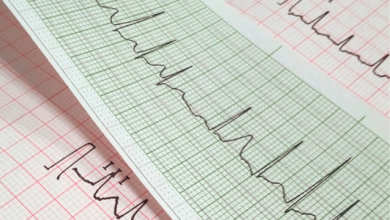Search results
Jeff Healey
Author
Author(s):
Neil T Srinivasan
,
Richard Schilling
Added:
3 years ago
An estimated 180,000–300,000 sudden cardiac deaths (SCD) occur in the US annually.1,2 Worldwide, sudden and unexpected cardiac death is the most common cause of death,2 accounting for 17 million deaths every year with SCD accounting for 25% of these. The accepted definition of SCD is death that occurs within one hour of onset of symptoms in witnessed cases, and within 24 hours of last being seen…
View more
Author(s):
Oholi Tovia-Brodie
,
Yoav Michowitz
,
Bernard Belhassen
Added:
3 years ago
Brugada syndrome (BrS) is a cardiac disease caused by an inherited ion channelopathy. It was first described by the Brugada brothers in 19921 and is associated with a propensity to develop ventricular fibrillation (VF). Brugada syndrome is characterised by prominent J waves appearing as an ST segment elevation in the right precordial leads. In the latest guidelines, diagnosis of BrS constitutes…
View more
Author(s):
Vincent Probst
,
Stéphanie Chatel
,
Jean-Baptiste Gourraud
,
et al
Added:
3 years ago
Brugada syndrome (BrS) is a clinical entity identified in 1992 by Brugada brothers from a file of patients resuscitated from sudden cardiac death (SCD).1 Of these patients, some had a specific electrocardiogram (ECG) appearance characterised by an incomplete right bundle branch block associated with an ST segment elevation in the right precordial leads. It quickly became apparent that this…
View more
Author(s):
Wei-Yao Lim
,
Sandeep Prabhu
Added:
3 years ago
The number of cardiac implantable electronic devices (CIED) has been increasing year-on-year.1 This, coupled with improvements in life expectancy,2 means that more elderly patients will meet the criteria for a CIED. National and international guidelines set out clear criteria and make recommendations for CIED use based on available evidence.3–6 However, the majority of clinical trials include few…
View more
Author(s):
Jan M Griffin
,
Jason N Katz
Added:
3 years ago
Prior to the widespread availability of left ventricular assist devices (LVADs), many end-stage heart failure patients were forced to fight over scarce transplant resources or face the reality of impending death. For those considered transplant-ineligible, due to medical or psychosocial factors, symptom palliation and end-of-life care were the only available options. This all changed dramatically…
View more
Paul Kalra
Job title: Professor
Author
Author(s):
Justine Bhar-Amato
,
William Davies
,
Sharad Agarwal
Added:
3 years ago
Ventricular tachyarrhythmias (VAs) most commonly occur early in ischaemia, and patients presenting with an acute MI and ventricular arrhythmias are a group that has a significantly increased risk of mortality.1,2 Thrombolysis primary percutaneous coronary intervention (PCI) and use of beta-blockers, while resulting in the modification of the natural history of an infarct, have also reduced the…
View more
Author(s):
Pasquale Santangeli
,
Luigi Di Biase
,
Eloisa Basile
,
et al
Added:
3 years ago
The number of invasive electrophysiological procedures is steadily increasing in Western countries, as techniques advance and the age of the population increases. Gender exerts a profound influence on the epidemiology, pathophysiology and clinical presentation of many cardiac rhythm disorders, and all these factors may affect the outcome of invasive electrophysiological procedures. Disturbingly,…
View more
Author(s):
Pok Tin Tang
,
Duc H Do
,
Anthony C Li
,
et al
Added:
3 years ago
Ventricular arrhythmias remain a major contributor to cardiac morbidity and mortality worldwide, despite ongoing research and implementation of novel therapeutic interventions. Modern management of patients with ventricular arrhythmias requires a multidisciplinary team approach, especially in complex presentations with a background of multiple medical comorbidities.1,2 Such teams may include…
View more















 « First
« First